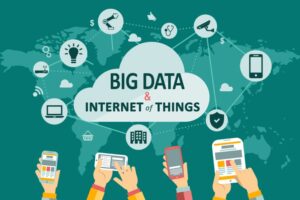In the age of digitalization, the Internet of Things (IoT) and big data have emerged as two of the most transformative technologies. Both technologies have revolutionized the way businesses operate and have opened up new opportunities for growth and development. In this article, we will explore the intersection of these two technologies and the opportunities and challenges that they present.
Introduction to IoT and Big Data
Before we dive into the opportunities and challenges, it’s important to understand what IoT and big data are. IoT refers to a network of connected devices that can communicate with each other and share data. These devices can range from home appliances to industrial equipment and can be connected via the internet or other networks.
Big data, on the other hand, refers to the large volumes of data that are generated from various sources such as IoT devices, social media, and online transactions. This data can be analyzed to gain insights and improve decision-making.
Opportunities of IoT and Big Data
The combination of IoT and big data has opened up several opportunities for businesses, including:
Improved Decision Making
IoT devices generate vast amounts of data that can be used to make better decisions. For example, data collected from sensors in manufacturing equipment can be used to identify areas for improvement, reduce downtime, and optimize production processes.
Enhanced Customer Experience
IoT devices can be used to collect data on customer behavior, preferences, and interactions. This data can be analyzed to personalize customer experiences and improve customer satisfaction.
Increased Efficiency
IoT devices can be used to monitor and control various processes, such as energy consumption and supply chain management. This can help businesses reduce costs, improve efficiency, and minimize waste.
New Business Models
IoT and big data have opened up new business models, such as subscription-based services and pay-per-use models. For example, IoT devices can be used to monitor usage of a product or service and charge customers accordingly.
Innovation
The combination of IoT and big data has the potential to drive innovation in various industries. For example, the healthcare industry can use IoT devices to monitor patient health and collect data for research.
Challenges of IoT and Big Data
Despite the many opportunities, the combination of IoT and big data also presents several challenges, including:
Security
IoT devices are often connected to the internet, making them vulnerable to cyberattacks. This can lead to data breaches and other security threats.
Privacy
IoT devices collect vast amounts of personal data, which can be used for unauthorized purposes. This has raised concerns about privacy and data protection.
Data Management
Big data requires sophisticated data management systems that can handle large volumes of data from various sources. This can be costly and complex.
Data Quality
Big data is only useful if it’s accurate and reliable. Ensuring data quality can be challenging, especially when dealing with data from multiple sources.
Skills Shortage
IoT and big data require specialized skills, such as data analysis and cybersecurity. There is currently a shortage of professionals with these skills, which can limit the adoption and growth of these technologies.
Conclusion
The combination of IoT and big data presents both opportunities and challenges for businesses. While these technologies have the potential to drive innovation and growth, they also require careful management to ensure data security, privacy, and quality. By addressing these challenges and leveraging the opportunities, businesses can unlock the full potential of IoT and big data.
FAQs
What is the Internet of Things?
The Internet of Things (IoT) refers to a network of connected devices that can communicate with each other and share data.
What is big data?
Big data refers to the large volumes of data that are generated from various sources such as IoT devices, social media, and online transactions
How can IoT and big data improve decision-making?
IoT devices generate vast amounts of data that can be analyzed to gain insights and improve decision-making. For example, data collected from sensors in manufacturing equipment can be used to identify areas for improvement, reduce downtime, and optimize production processes.
What are the challenges of IoT and big data?
The challenges of IoT and big data include security, privacy, data management, data quality, and a shortage of specialized skills.
How can businesses overcome the challenges of IoT and big data?
Businesses can overcome the challenges of IoT and big data by investing in robust data management systems, ensuring data security and privacy, and developing specialized skills in areas such as data analysis and cybersecurity. By doing so, they can fully leverage the opportunities presented by these transformative technologies.

